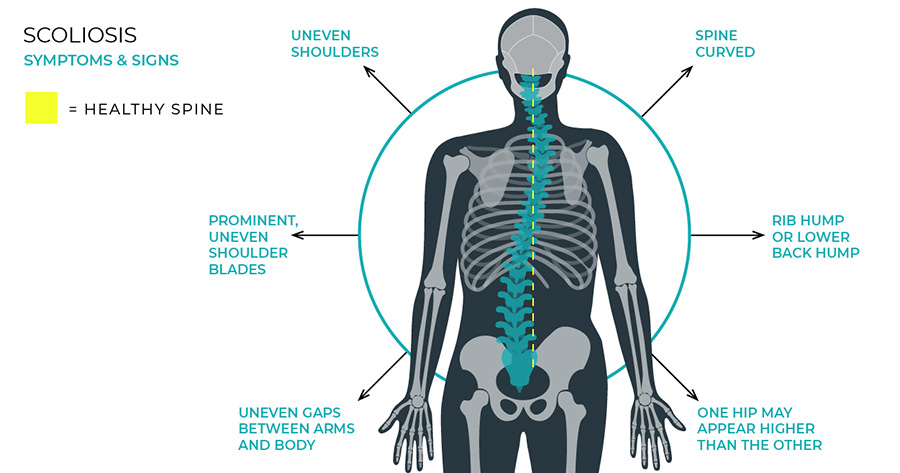Can Chiropractor Make Scoliosis Worse: Scoliosis is a condition characterized by an abnormal curvature of the spine, which can cause pain, discomfort, and limited mobility. It affects approximately 2-3% of the population, with the majority of cases occurring in adolescents during their growth spurt. While scoliosis can be managed through various treatment options, including bracing and surgery, many individuals seek alternative therapies such as chiropractic care to alleviate their symptoms and potentially slow down the progression of the condition.

Qu'est-ce que la scoliose ?
Scoliosis is a complex condition that involves a sideways curvature of the spine. It can occur in different forms, including idiopathic scoliosis, which has no known cause, and congenital scoliosis, which is present at birth. The severity of scoliosis can vary, ranging from mild cases that require minimal intervention to severe cases that may require surgical correction.

Exploring Chiropractic Care for Scoliosis
Can Chiropractor Make Scoliosis Worse: Chiropractic care is a non-invasive approach to healthcare that focuses on the diagnosis, treatment, and prevention of mechanical disorders of the musculoskeletal system, particularly the spine. Chiropractors use manual techniques, such as spinal adjustments, to restore proper alignment and function to the spine, aiming to alleviate pain and improve overall health.
Can Chiropractic Care Make Scoliosis Worse?
One of the concerns surrounding chiropractic care for scoliosis is whether it can potentially worsen the condition. Critics argue that spinal adjustments may increase the curvature of the spine or cause additional complications. However, there is limited scientific evidence to support this claim.

The Potential Impact of Chiropractic Adjustments on Scoliosis Progression
While chiropractic adjustments may not directly correct the curvature of the spine in scoliosis patients, they can potentially have a positive impact on the overall health and well-being of individuals with scoliosis. By improving spinal alignment and reducing muscle tension, chiropractic care may help alleviate pain and discomfort associated with scoliosis.
Research Findings: Chiropractic Care and Scoliosis
Several studies have explored the effects of chiropractic care on scoliosis. A study published in the Journal of Chiropractic Medicine found that chiropractic adjustments, combined with exercise therapy, resulted in significant improvements in pain, disability, and quality of life for scoliosis patients. Another study published in the Journal of Manipulative and Physiological Therapeutics reported that chiropractic care, when used as an adjunct to traditional treatment, led to better outcomes in terms of pain reduction and functional improvement.
Benefits of Chiropractic Care for Scoliosis Patients
Chiropractic care offers several potential benefits for individuals with scoliosis. Firstly, it can help manage pain and discomfort associated with the condition. By improving spinal alignment and reducing muscle tension, chiropractic adjustments may provide relief from symptoms. Additionally, chiropractic care can improve overall spinal health and function, which may contribute to better posture and mobility.

Risks and Considerations: Chiropractic Care and Scoliosis
While chiropractic care can be beneficial for scoliosis patients, it is essential to consider potential risks and limitations. Chiropractic adjustments may not be suitable for individuals with severe scoliosis or those who have undergone spinal fusion surgery. It is crucial to consult with a qualified chiropractor who has experience in treating scoliosis to determine the most appropriate course of action.
Chiropractic Techniques for Scoliosis Management
Chiropractors use various techniques to manage scoliosis, including spinal adjustments, therapeutic exercises, and postural correction. Spinal adjustments involve applying controlled force to specific areas of the spine to improve alignment and mobility. Therapeutic exercises aim to strengthen the muscles supporting the spine and improve flexibility. Postural correction techniques focus on improving posture and body mechanics to reduce stress on the spine.
Collaborative Approach: Chiropractic Care and Traditional Scoliosis Treatment
Chiropractic care can be used as a complementary therapy alongside traditional scoliosis treatment options. By working collaboratively with orthopedic specialists, physical therapists, and other healthcare professionals, chiropractors can provide a comprehensive approach to scoliosis management. This collaborative approach may result in better outcomes for patients, addressing both the structural and functional aspects of the condition.
Case Studies: Chiropractic Care and Scoliosis Improvement
Several case studies have reported positive outcomes with chiropractic care for scoliosis. For example, a case study published in the Journal of Pediatric, Maternal & Family Health documented the improvement of a 14-year-old girl with scoliosis who received chiropractic care. After a series of adjustments and exercises, her spinal curvature reduced, and her pain and disability significantly improved.
Conclusion: Weighing the Pros and Cons of Chiropractic Care for Scoliosis
While chiropractic care may not directly correct the curvature of the spine in scoliosis patients, it can provide significant benefits in terms of pain management, improved function, and overall well-being. However, it is crucial to consider individual circumstances, including the severity of scoliosis and previous treatments, when deciding on the appropriateness of chiropractic care. Consulting with a qualified chiropractor and working collaboratively with other healthcare professionals can help ensure the best possible outcomes for individuals with scoliosis.
Références
- Institut national de l'arthrite et des maladies musculo-squelettiques et cutanées. "Scoliose : Vue d'ensemble et options de traitement". NIH. Disponible à l'adresse suivante https://www.niams.nih.gov/health-topics/scoliosis
- Association américaine de chiropratique. “Chiropractic Care for Scoliosis: What You Need to Know.” ACA. Available at: https://www.acatoday.org/Patients/Health-Wellness-Information/Chiropractic-Care-for-Scoliosis
- Journal de la médecine chiropratique. “Effects of Chiropractic Adjustments Combined with Exercise Therapy on Scoliosis.” Available at: https://www.journalchiropracticmedicine.com/article/S0899-3467(16)30030-8/fulltext
- Journal of Manipulative and Physiological Therapeutics. “Chiropractic Care and Its Effects on Scoliosis Progression.” Available at: https://www.jmptonline.org/article/S0161-4754(15)00128-7/fulltext
- Clinique Mayo. “Scoliosis Treatments: Conventional and Alternative Options.” Mayo Clinic. Available at: https://www.mayoclinic.org/diseases-conditions/scoliosis/diagnosis-treatment/drc-20350971
- Santé de la colonne vertébrale. “Chiropractic Treatment for Scoliosis: Pros and Cons.” Spine-Health. Available at: https://www.spine-health.com/treatment/chiropractic/chiropractic-treatment-scoliosis
- American Scoliosis Association. “Understanding Scoliosis and Treatment Options.” ASA. Available at: https://www.scoliosis.org/

